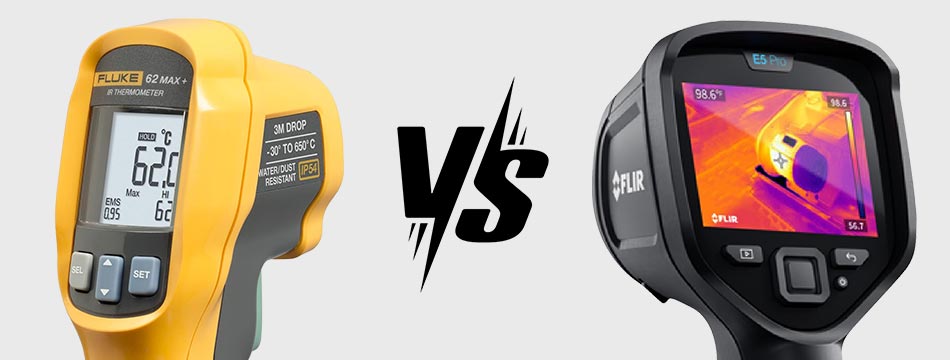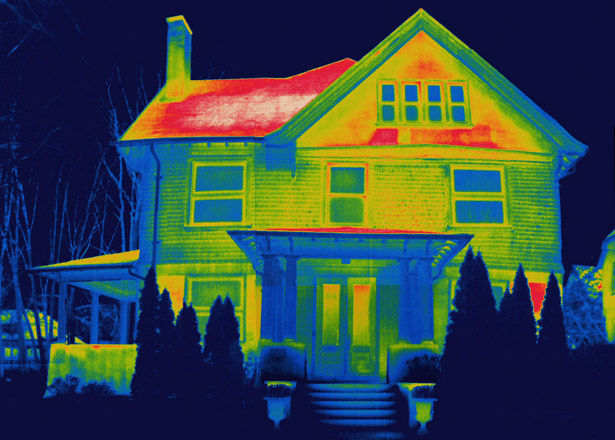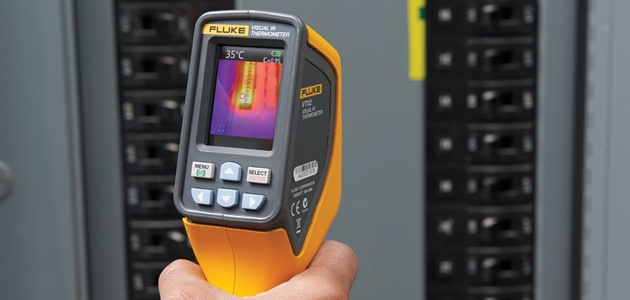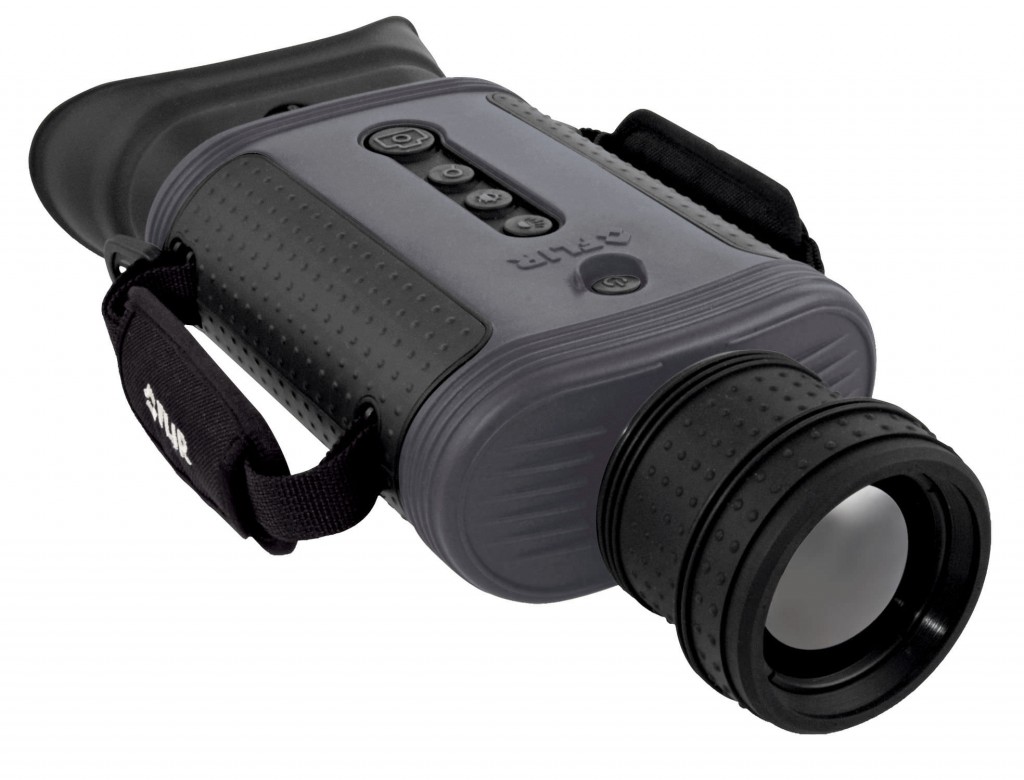
Thousands of applications require the use of temperature - and the maintenance of temperature - in order to work correctly. But which of the most common forms of measurement tool is better for quantifying temperature levels?
Both tools - infrared (IR) thermometers and thermal imaging cameras - are commonly used as a tool for measuring temperature and determining problems within an area. Each has their own merits and are highly useful tools, but which is best for you? The answer honestly lies in your application; for single, precise measurements of temperature at a specific point an IR thermometer is the way to go, whereas if you require viewing temperature distribution quickly over a wider area a thermal camera is much more appropriate.
Recently the line between the two types of tester has started to blur as Fluke developed and released their visual IR thermometer range. These devices have all of the functionality of a common IR thermometer but also come with limited picture capability, effectively giving users the tools to measure temperature over a wider area with a reduced cost compared to buying a thermal camera.
Before we get further into how these products differ from each other it's first important to understand the underlying factor that both tools rely on: infrared radiation.
What is IR?
 In the example above, you can see that the house shown is giving out a lot of heat in the roof (shown by the red colouring).
In the example above, you can see that the house shown is giving out a lot of heat in the roof (shown by the red colouring).
The human eye, as complex as it is, is not fully capable of processing every form of light in the universe. Our eyes are programmed to interpret visible light and convert it directly into an image via intricate processes through the brain, but there's a whole world of different types of light that we just can't see.
The light spectrum, as it is known, quantifies this into various different segments. We can see visible light using our eyes, but UV (ultraviolet), X-ray, gamma, microwave radio and infrared (IR) are completely invisible to the human eye. The latter is what is used by both a thermal camera and an IR thermometer to calculate temperature.
Infrared energy is emitted by any object, giving it a temperature. Whether it's our own bodies, a piece of running machinery or an ice block, every single one of these emits a degree of infrared energy that's invisible to the eyes but can be felt as heat or cold when you're close to the object.
In the example above, you can see that the house shown is giving out a lot of heat in the roof (shown by the red colouring).
IR thermometers and thermal cameras are able to pick up on this invisible IR energy and convert it into a temperature measurement via the use of a specific IR sensor and complex algorithms programmed into the tester. This value is then shown as a temperature reading on a common IR thermometer or as a more complex thermal image when using a thermal camera.
By interpreting IR radiation, both types of instrument are able to quantify temperature accurately and quickly.
Why Choose an IR Thermometer?
An IR thermometer is made for quantifying temperature in a single measurement spot, usually achieved by shining a bright laser beam on a surface. Ideal for measuring temperature at a distance when it isn't possible to get near to an application due to high or low heat, the IR thermometer allows the user to pinpoint an exact measurement point and gain a temperature reading from that specific area.
They're best suited to applications where measurements of temperature over multiple points aren't necessary - if you do have to use an IR thermometer to measure over many different points, it can be extremely time consuming, inaccurate because temperature may have changed and lead to incorrect results.
Here's exactly why these products are useful:
- Non-contact nature ensures no damage is made to the object under test and protects the user
- Designed to respond quickly to changes in temperature at the measurement spot
- Wide measurement range (varies depending on model used)
- High accuracy measurements (varies depending on model used)
- Pinpoint measurements of a small area
- Portable, lightweight design
- Low cost - much cheaper than thermal cameras
Why Choose a Thermal Camera?
If you're measuring temperature over a wide area and need a comprehensive view of the environment simultaneously, the thermal camera is an unbeatable tool. Capable of detecting temperature from multiple points at the same time and transferring this information directly into a thermal image, the thermal camera beats infrared thermometers in this aspect as IR thermometers can only measure a single spot one at a time.
Imagine for example you're trying to find the problematic component in a large electrical system. You know that the problem will be easily spotted by detecting which component is outputting too much heat, but there's no way of checking which one it is without using a temperature measurement instrument.
If you used an IR thermometer for this purpose you'd have to check potentially hundreds of different spots to find a strange spike in temperatures within the system. In comparison using a thermal camera would take literally seconds - all you'd have to do is point the camera directly at the place of measurement, capture an image and look for an area that shows up as hotter than the rest.
In terms of speed and usefulness, there's no way an IR thermometer can compete with a thermal imaging system. The only drawback these systems have is their larger price range; thermal cameras use several expensive specialist components in order to operate and are thus much more expensive than IR thermometers.
Here's some of the benefits of using a thermal imaging camera:
- Comprehensive view of an area
- Extremely varied selection of models with different capabilities
- Instant capture of an image that can be viewed back at a later date
- Suitable for use in thousands of applications ranging from finding electrical faults to spotting icebergs when out at sea in a ship
- Handheld, camera-shaped design
- Download images to PC for further interaction
- High quality rugged design for use in difficult environments
- Selection of lens options to further expand the capabilities of the camera
- Highly sensitive to changes in environment temperature (sensitivity level depends on the model)
- Prices start from under £1000
- Countless advanced features such as annotations, zoom and more (dependant on model)
- Can see through complete darkness to spot heat signatures
- Can see through adverse weather conditions such as fog and snow
Which is Better?
In terms of raw power and functionality, the thermal camera beats an IR thermometer every time. IR thermometers are however not without merit; they're still extremely useful tools that are perfect for single, safe measurements at a distance and are perfectly suited for those looking for a cheaper alternative when measuring temperature levels.
So which has piqued your interest? You can view more about our range of IR thermometers and thermal cameras by clicking the links below:




